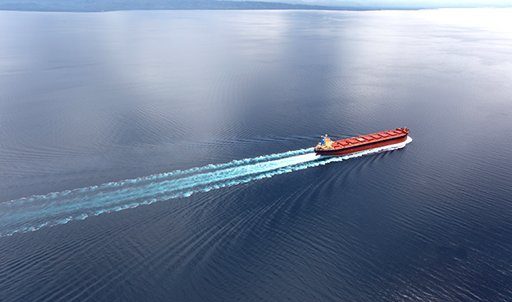BRS boss reignites the slow steaming debate

François Cadiou, the chairman of French brokerage BRS, has reignited the slow steaming debate, arguing in his company’s just published annual review of the shipping markets, that going slower is the best option the industry faces to tackle emissions right now.
Based on International Maritime Organization (IMO) data (see chart below), the volume of marine fuels – including HFO, MGO, MDO, LNG, LPG and methanol – consumed has remained “extraordinarily stable” since 2008 oscillating between 310m and 340m tonnes of oil equivalent despite the merchant fleet doubling in size from 1,108m dwt to 2,072 m dwt, Cadiou pointed out. This reflects two factors, Cadiou suggested. First, a reduction in service speed, especially for large container carriers going from 22 to 25 knots prior to 2008 to 18 to 20 knots or less. Secondly, Cadiou described the fruits of the eco-revolution that took place in naval architecture in the early 2010s allowing a reduction of 20-40% in the daily fuel consumption of newbuildings.
The IMO still envisages cuts of 70% to CO2 and 50% to GHG emissions by 2050, when compared to 2008 levels. Furthermore, it has mandated an intermediate milestone of cutting CO2 emissions by 40% by 2030, although ships are typically designed and built to last for up to 30 years.
“To reach these IMO goals, the shipping industry needs to find the optimal mix of technical and operational measures and innovative solutions,” Cadiou wrote, saying the industry can actually do the necessary now and show its leadership by simply adopting slow steaming.
A 20% reduction in service speed would result immediately into a 50% drop in CO2 and GHG emissions
“A 20% reduction in service speed would result immediately into a 50% drop in CO2 and GHG emissions,” Cadiou claimed, adding: “We could go one step further and reduce the design service speeds of bulkers and tankers from about 13-14 kt to about 11-12 kt and of container carriers from 18-20 kt to 13-14 kt.”
The Frenchman conceded there would be a need for some additional tonnage to cope with the reduction of speed but before coming to that point ships could be further optimised.
Cadiou also demanded shipping search for better logistical efficiencies resulting in more consistent speed profiles.
“It is heart-breaking to witness ships sailing at full speed only to slow down and wait for days/weeks/ months especially in 2021 before delivering their cargo or crossing oceans in ballast at full speed,” Cadiou observed.
He also envisaged more flexible ships capable of always being loaded such as new oil bulk ore carriers (OBO) to avoid large bulkers and tankers sailing empty 50% of the time.
In concluding, Cadiou wrote: “As we wait for the required quantum leap in innovation, the shipping industry can show its leadership and bring the 330m tonnes of marine fuel consumed per year (or about 1bn tonnes CO2 released into the atmosphere!) down to 165m tonnes (or about 500 m tonnes CO2) almost overnight.”
France has had many strong backers of the slow steaming movement lately with Philippe Louis-Dreyfus, shipping’s original champion of slow-steaming legislation, even getting the nation’s president, Emanuel Macron, to publicly call for international speed limits for vessels.

